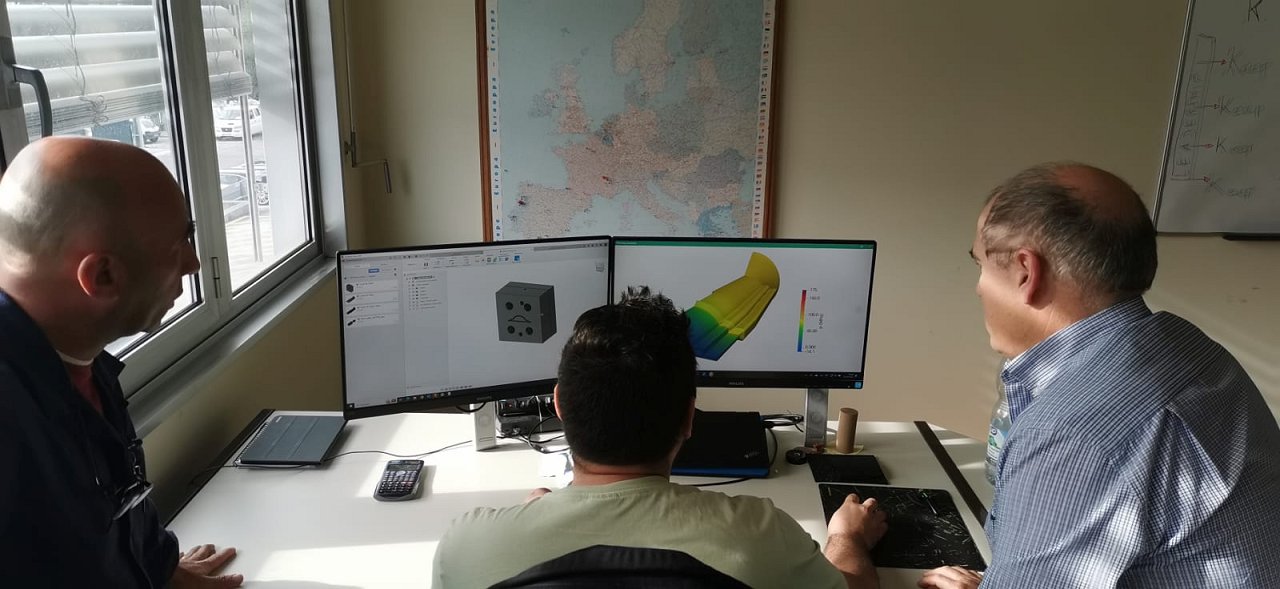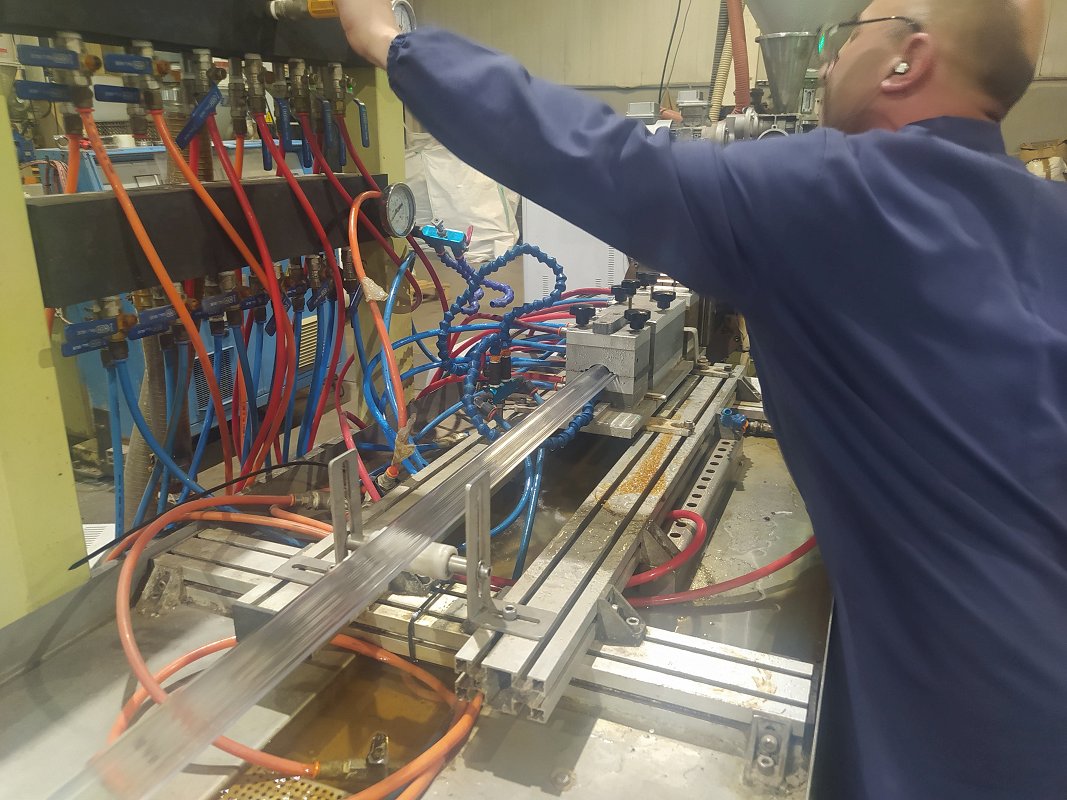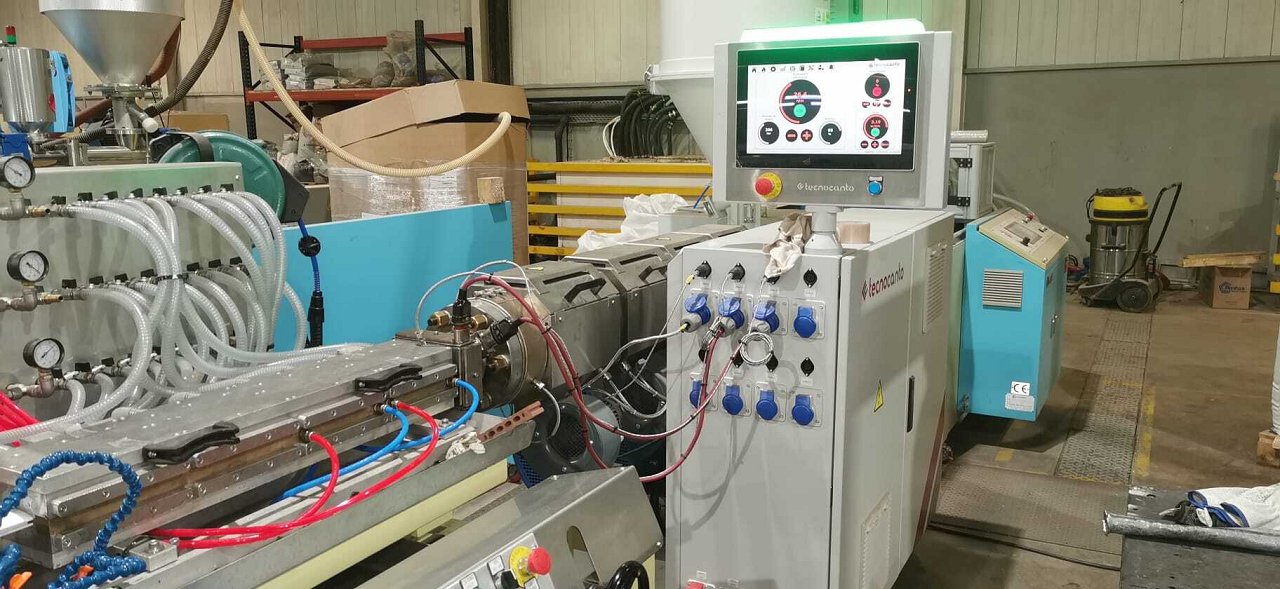High Performance Computing for Profile Extrusion
Profile extrusion is the technique employed to manufacture constant cross-section thermoplastic profiles, which has as major applications the building, automotive and healthcare industries. The design of profile extrusion dies, the components that shape the polymer melt is a very complex task, and is usually undertaken in the industry by experimental trial-and-error approaches. The employment of appropriate computational codes, able to support the design of profile extrusion dies, in an HPC framework, is expected to bring clear advantages to the final product performance, production process optimization, and time to market.
SECTOR: Manufacturing
TECHNOLOGY USED: HPC, CFD Simulation
COUNTRY: Portugal
The challenge
Plastic profiles are used in several sectors (e.g. healthcare, civil engineering, aeronautics) and for a variety of applications due to the competitive material properties and design freedom they provide. In fact, plastic profiles can theoretically have arbitrary cross sections and therefore be tailored for very specific applications. However, the design methodologies usually employed are based on experimental trial-and-error approaches, are highly dependent on the experience of the designer, and require a large amount of time and material to achieve the desired product and performance. These limitations are exacerbated when the desired profile has a complex geometry and there is a lack of previous experience with similar geometries. These difficulties significantly increase the cost of developing new profiles and, as a consequence, the final product price, which has a negative impact on Soprefa’s ability to expand its business. The most relevant component of an extrusion line is the extrusion die, which should be designed to promote an even flow distribution at its outlet, something very difficult to achieve for the complex profiles required by the most demanding applications. To overcome these obstacles, Soprefa needs a simulation framework that improves the design process, reduces the overall plastic profile design costs, and delivers increased quality profiles, in a timeframe compatible with the customer industry requirements.
The solution
The experiment provided Soprefa with computational tools based on open-source and free-access computational libraries. The main simulation codes that can run on HPC systems were implemented in OpenFOAM and coupled with the optimization software Dakota. This allowed the extrusion die to be automatically optimized, within an appropriate time frame, by conducting hundreds of trials in just one day, which would be impossible without resorting to HPC systems. The implemented simulation framework can be employed with two different CAD package options, Onshape and Fusion 360. Since the latter is incompatible with the current HPC platforms, it was necessary to implement methods to ensure the communication between the computer that runs the CAD software and the HPC system. The implemented computational framework was tested with different case studies, both for improving previously designed extrusion dies, whose desired performance could not be achieved with the traditional experimental based trial-and-error design process, and for newly designed extrusion dies.
Business impact, Social impact, Environmental impact
The results obtained in this experiment clearly emphasize the advantages in terms of product time to market (30-40% reduction) and cost (23% reduction) of using computational modelling running on HPC systems.
Soprefa now has access to a simulation framework that can support its production tools development process, which, based on the results obtained in the experiment, will have a clear positive and immediate impact on their products and facilitate an increase in the number, range, and complexity of their products and, consequently, client base.
University of Minho and Wolf Dynamics demonstrated the effectiveness of their know-how for addressing industrial problems. The proposed approach was clearly innovative and allowed them to solve unforeseen issues like the need for having permanent communication between CAD and simulations/optimization tools that run in different environments. The results obtained emphasized the joint skills of the University of Minho and Wolf Dynamics and allowed the latter to start expanding their knowledge in the field of polymer processing. The capabilities acquired in the experiment by both partners are expected to increase their visibility and promote their participation in additional projects where the developed framework can be adapted to applications other than plastic profile extrusion.
Benefits
- A novel improved design methodology for profile extrusion dies, supported by simulation and optimization tools, combined in a framework that can take advantage of the speedup offered by HPC systems.
- Reduction of 30-40% in the product time to market (from 3 to 2 months).
- Minimum Reduction of 40% of raw materials used in experimental trials (from 1 Ton to 600 kg).
- Reduction of the overall cost development by 23% (from €18,000 to €14,000 per tool).
- With a reduced need for trial-and-error, Soprefa is less dependent on contractors for the design of extrusion dies. A more independent die design allows Soprefa to better protect its know-how.
Organisations involved:
End user and Application Expert: Soprefa Componentes Industriais, S.A.
Technology and HPC Expert: University of Minho
ISV: Wolf Dynamics
Partner University of Minho is part of the Portuguese NCC.




